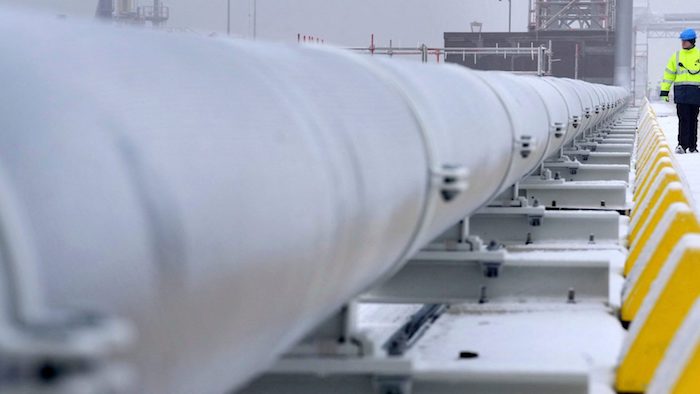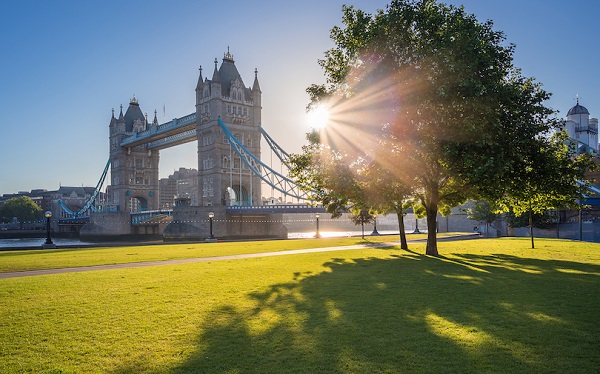Alberta
2022 – the year fossil fuels once again became a preferred source of reliable, affordable energy

A worker walks past gas pipes at Uniper’s new LNG import terminal in Wilhelmshaven, northern Germany on December 17, 2022. Getty Images photo
From the Canadian Energy Centre Ltd.
By David Yager
David Yager is an oilfield service executive, oil and gas writer, and energy policy analyst. He is author of From Miracle to Menace – Alberta, A Carbon Story.
The only part of the demise of oil and gas that was successful was reduced supply
It seems like just the other day the wrath of the world was coming down on oil sands and coal.
To protect the atmosphere, Canada has been reducing coal-fired power generation for years. It started in Ontario then moved to Alberta. Saskatchewan is next. New Brunswick is supposed to stop by 2030, but that province claims it can’t be done.
Global coal consumption is rising again because it meets the cost and availability requirement created by energy shortages and rising prices. On December 16, the International Energy Agency reported, “The world’s coal consumption is set to reach a new high in 2022 as the energy crisis shakes markets.”
For energy, the biggest single change in 2022 is the remarkable shift in public attitudes towards fossil fuels.
The global energy complex is under assault by Russia’s invasion of Ukraine, the exposed shortcomings of wind and solar, years of underinvestment in fossil fuels, and rising inflation and interest rates.
But for the past ten years, there has been an all-out crusade against fossil fuels. Oil company CEOs were branded climate criminals. It was morally reprehensible to own fossil fuel company shares or loan money to oil, gas or coal producers. Elections were won in Canada, the US and in Europe on pledges to replace fossil fuels.
No cost was too great, because the cost of doing nothing thus permitting unchecked climate damage was greater.
What happened? How did the channel change to rapidly? Why after years of public and political attacks on the source of over 80 per cent of the world primary energy, has affordable energy on demand now become more important than where it comes from?
Price, the most fundamental driver of economics and human behavior.
The November 2022 global survey from public opinion research firm IPSOS titled “What Worries The World” tells the story.
IPSOS explains, “This 29-country Global Advisor survey was conducted…among 20,466 adults aged 18-74 in Canada, Israel, Malaysia, South Africa, Turkey and the United States, 20-74 in Indonesia and Thailand, and 16-74 in all 21 other countries.”

IPSOS charts the top six issues for the past two years. Poverty, crime, unemployment and corruption have always been important, and consistently ranked among the top five.
But in November 2020, inflation only registered among eight per cent of respondents. Two years later it is 42 per cent. Coronavirus and the unemployment that accompanied the lockdowns were the top two issues. The others remain in a consistent range.
Two years ago was the peak of the “oil is dead” mantra, and when many bright ideas for a fossil fuel free future were concocted. In a post-pandemic world, multiple voices claimed we must Build Back Better, ensure a Resilient Recovery, engineer the Great Reset.
The plan was to use government policy and borrowed money to create jobs through the large-scale replacement of fossil fuels.
Coined the “energy transition,” it was achievable and inevitable thanks to incredible advances in renewable energy cost and supply. Canada – the world’s fifth largest combined oil and gas producer – could lead the charge with minimal disruption thanks to a new federally-funded retraining program for displaced oil workers. This was called a Just Transition.
What happened?
The invisible hand of Adam Smith punched the world in the nose.
The only part of the demise of fossil fuels that was successful was reduced supply. As the economy recovered, consumers learned the hard way that low carbon energy sources were terribly oversold in terms of reliability, and demand for fossil fuels outstripped supply.
Prices for fossil fuels rose at the same time that inflation and interest rates reduced disposal income.
As demand grew, fossil fuel shortages were reflected in the price. When Russia – one of the world’s largest oil, gas and coal suppliers – invaded Ukraine, the gravity of the situation escalated immediately.
What the IPSOS survey dramatically illustrates is the number one concern for the world as 2022 ends is the rising cost of everything.
We’ve been told repeatedly that continued fossil fuel consumption will cause serious climate disruptions. No expense today will exceed the cost of future damages.
However, the more pressing issue today is still being alive in 2050 because of the rising cost of everything, including energy. Worrying about what the temperature, storm intensity or chemical composition of the atmosphere may be in 28 years has become an unaffordable luxury.
So fossil fuels are once again what they have always been – reliable and affordable sources of energy.
Happy New Year.
Alberta
Red Deer Justice Centre Grand Opening: Building access to justice for Albertans

The new Red Deer Justice Centre will help Albertans resolve their legal matters faster.
Albertans deserve to have access to a fair, accessible and transparent justice system. Modernizing Alberta’s courthouse infrastructure will help make sure Alberta’s justice system runs efficiently and meets the needs of the province’s growing population.
Alberta’s government has invested $191 million to build the new Red Deer Justice Centre, increasing the number of courtrooms from eight to 12, allowing more cases to be heard at one time.
“Modern, accessible courthouses and streamlined services not only strengthen our justice
system – they build safer, stronger communities across the province. Investing in the new Red Deer Justice Centre is vital to helping our justice system operate more efficiently, and will give people in Red Deer and across central Alberta better access to justice.”

Government of Alberta and Judiciary representatives with special guests at the Red Deer Justice Centre plaque unveiling event April 22, 2025.
On March 3, all court services in Red Deer began operating out of the new justice centre. The new justice centre has 12 courtrooms fully built and equipped with video-conference equipment to allow witnesses to attend remotely if they cannot travel, and vulnerable witnesses to testify from outside the courtroom.
The new justice centre also has spaces for people taking alternative approaches to the traditional courtroom trial process, with the three new suites for judicial dispute resolution services, a specific suite for other dispute resolution services, such as family mediation and civil mediation, and a new Indigenous courtroom with dedicated venting for smudging purposes.
“We are very excited about this new courthouse for central Alberta. Investing in the places where people seek justice shows respect for the rights of all Albertans. The Red Deer Justice Centre fills a significant infrastructure need for this rapidly growing part of the province. It is also an important symbol of the rule of law, meaning that none of us are above the law, and there is an independent judiciary to decide disputes. This is essential for a healthy functioning democracy.”
“Public safety and access to justice go hand in hand. With this investment in the new Red Deer Justice Centre, Alberta’s government is ensuring that communities are safer, legal matters are resolved more efficiently and all Albertans get the support they need.”
“This state-of-the-art facility will serve the people of Red Deer and surrounding communities for generations. Our team at Infrastructure is incredibly proud of the work done to plan, design and build this project. I want to thank everyone, at all levels, who helped make this project a reality.”
Budget 2025 is meeting the challenge faced by Alberta with continued investments in education and health, lower taxes for families and a focus on the economy.

Quick facts
- The new Red Deer Justice Centre is 312,000 sq ft (29,000 m2). (The old courthouse is 98,780 sq ft (9,177 m2)).
- The approved project funding for the Red Deer Justice Centre is about $191 million.
Alberta
CPP another example of Albertans’ outsized contribution to Canada

From the Fraser Institute
By Tegan Hill
Amid the economic uncertainty fuelled by Trump’s trade war, its perhaps more important than ever to understand Alberta’s crucial role in the federation and its outsized contribution to programs such as the Canada Pension Plan (CPP).
From 1981 to 2022, Albertan’s net contribution to the CPP—meaning the amount Albertans paid into the program over and above what retirees in Alberta received in CPP payments—was $53.6 billion. In 2022 (the latest year of available data), Albertans’ net contribution to the CPP was $3.0 billion.
During that same period (1981 to 2022), British Columbia was the only other province where residents paid more into the CPP than retirees received in benefits—and Alberta’s contribution was six times greater than B.C.’s contribution. Put differently, residents in seven out of the nine provinces that participate in the CPP (Quebec has its own plan) receive more back in benefits than they contribute to the program.
Albertans pay an outsized contribution to federal and national programs, including the CPP because of the province’s relatively high rates of employment, higher average incomes and younger population (i.e. more workers pay into the CPP and less retirees take from it).
Put simply, Albertan workers have been helping fund the retirement of Canadians from coast to coast for decades, and without Alberta, the CPP would look much different.
How different?
If Alberta withdrew from the CPP and established its own standalone provincial pension plan, Alberta workers would receive the same retirement benefits but at a lower cost (i.e. lower CPP contribution rate deducted from our paycheques) than other Canadians, while the contribution rate—essentially the CPP tax rate—to fund the program would likely need to increase for the rest of the country to maintain the same benefits.
And given current demographic projections, immigration patterns and Alberta’s long history of leading the provinces in economic growth, Albertan workers will likely continue to pay more into the CPP than Albertan retirees get back from it.
Therefore, considering Alberta’s crucial role in national programs, the next federal government—whoever that may be—should undo and prevent policies that negatively impact the province and Albertans ability to contribute to Canada. Think of Bill C-69 (which imposes complex, uncertain and onerous review requirements on major energy projects), Bill C-48 (which bans large oil tankers off B.C.’s northern coast and limits access to Asian markets), an arbitrary cap on oil and gas emissions, numerous other “net-zero” targets, and so on.
Canada faces serious economic challenges, including a trade war with the United States. In times like this, it’s important to remember Alberta’s crucial role in the federation and the outsized contributions of Alberta workers to the wellbeing of Canadians across the country.
-

 2025 Federal Election1 day ago
2025 Federal Election1 day agoStudy links B.C.’s drug policies to more overdoses, but researchers urge caution
-

 Business2 days ago
Business2 days agoChinese firm unveils palm-based biometric ID payments, sparking fresh privacy concerns
-

 conflict2 days ago
conflict2 days agoMarco Rubio says US could soon ‘move on’ from Ukraine conflict: ‘This is not our war’
-

 2025 Federal Election1 day ago
2025 Federal Election1 day agoConservatives promise to ban firing of Canadian federal workers based on COVID jab status
-

 Business1 day ago
Business1 day agoIs Government Inflation Reporting Accurate?
-

 COVID-192 days ago
COVID-192 days agoRFK Jr. Launches Long-Awaited Offensive Against COVID-19 mRNA Shots
-

 2025 Federal Election2 days ago
2025 Federal Election2 days agoFormer WEF insider accuses Mark Carney of using fear tactics to usher globalism into Canada
-

 Environment1 day ago
Environment1 day agoExperiments to dim sunlight will soon be approved by UK government: report




